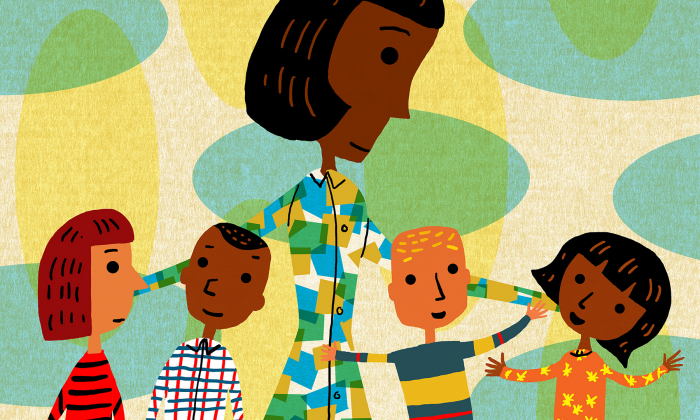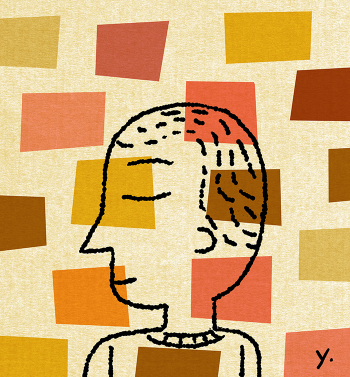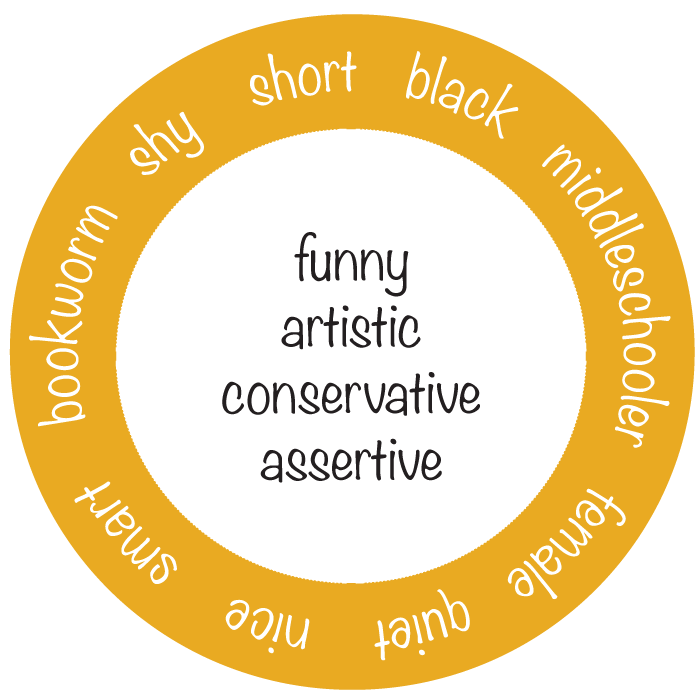
The Social Justice Standards are the anchor standards and learning outcomes created to guide teachers in curriculum development and to make schools more just, equitable and safe. Our standards are designed to be used alongside state and Common Core standards in all content areas to reduce prejudice and bias and advocate for collective action.
These standards are divided into four domains: Identity, Diversity, Justice and Action. Starting with this issue of Teaching Tolerance, PD Café will walk through each domain one at a time to help you understand and apply each to your practice so that students develop the skills they need to reduce prejudice and make their schools and communities a safe place for all.

Understanding Identity
What Is Identity?
- The collective aspect of the set of characteristics by which a person is definitively recognized or known.
- The set of behavioral or personal characteristics by which an individual is recognizable as a member of a group.
Source: Websters II New College Dictionary
Visible vs. Invisible Identity
- Your identity consists of the various characteristics you use to categorize and define yourself and the various characteristics that are constructed by those around you.
- Some aspects of your identity are visible, such as skin color. Others are not as easily knowable, such as the language you speak. Still others are invisible, such as religion or sexual orientation.
Look at the following list of characteristics and write whether you believe they are visible or invisible.

Personal vs. Social Identity
- Parts of your identity can be personal: beliefs, values and characteristics that make you unique as an individual.
- Other parts of your identity are social: attributes that influence how you interact with others, such as personality traits (kind, shy), where you live or your group affiliations (belonging to a religion, your occupation). These are things you can manipulate. Others you can’t, such as your race, ethnicity or certain physical characteristics.
- It’s important to remember that multiple identities make each person who they are and can be fluid—some things might be personal but have social impact, and some things with social impact can have a personal effect. The key is to be able to understand how identities are formed, which can lead to self-confidence and the ability to celebrate others.
Mapping Identities
Now practice mapping out aspects of your identity. You can also do this activity with students.
- See the two circles below. In the center circle, write words you would use to describe your personal identity: traits, behaviors, beliefs, values, characteristics and skills that make you an individual. These could include occupation, hobbies and invisible attributes (like being the eldest sibling). You can also write ways you see yourself (funny, artistic, conservative, assertive).
- In the outer ring, write words that describe your social identity: traits others might assign to you without knowing you. Consider your race, age, gender, physical characteristics, where you live or how others might perceive you. For example, some might view you as shy or athletic. It’s OK if attributes of your personal identity overlap with your social identity—you can write them in both circles.

This activity is adapted from the Center for Creative Leadership’s resource “Social Identity Mapping.”
Identity Standards
Our Identity domain has five anchor standards to help students understand their own identity as well as the identities of others.
- Students will develop positive social identities based on membership in multiple groups in society.
- Students will develop language and historical and cultural knowledge that affirm and accurately describe their membership in multiple identity groups.
- Students will recognize that multiple identities interact to create unique and complex individuals.
- Students will express pride, confidence and healthy self-esteem without denying the value and dignity of other people.
- Students will recognize traits of the dominant culture, their home culture and other cultures, and understand how they negotiate their own identity in multiple spaces.
Next, read these two scenarios to consider what these standards might look like in a school setting and determine which standards are demonstrated in each.
Scenario 1
For Show and Tell, Joi brings in a picture of her family on a church camping trip. “My family goes camping a lot. I like camping,” she says. “I’m a Christian, and sometimes my family goes camping with our church. I’m also a big sister, so I have to help my parents take care of my little brother, especially when we go camping.”
Which of the Identity standards are demonstrated in Joi’s Show and Tell?
Answer: This scenario touches on standards 1, 2 and 4. Joi discusses her membership in multiple groups, aspects of her chosen identity (camping), aspects of her given identity (being a sibling) and pride in who she is.
Scenario 2
Omar’s mother is serving as a chaperone on her son’s field trip. During the bus ride, the teacher, Ms. Robin, overhears a conversation between Omar and Peter.
“What is your mother wearing on her head?” Peter asks.
“It’s called a hijab,” Omar replies. “Many Muslim women wear them.”
“Why does she wear it?”
“Our religion teaches us that the hijab is a way of being humble and modest. Muslim women wear it to show they love God.”
Which of the Identity standards are demonstrated in Omar and Peter’s discussion?
Answer: This scenario touches on standards 2, 4 and 5. Omar has cultural knowledge to explain the hijab to Peter, and he expresses confidence in that explanation. Peter also understands that there are different cultures around him and that he can be curious about understanding Omar’s culture without insulting him or feeling insecure about his own culture.
You can find age-appropriate, grade-level outcomes and more scenarios here.

Essential Questions
A great way to integrate the Identity standards into your practice is to write essential questions to guide students through a unit of study. Here are two examples of essential questions from different content areas.
Third-grade Science Unit on Electricity
I.3: How can a person’s access to or experience using electricity change the way they live in society and interact with others?
Sample Answer: Students can explore how having functioning electricity in their homes changes what they might do for fun (watch TV, surf the internet), as opposed to someone who does not (spend more time playing outside), and how that shapes their identities.
Ninth-grade Social Studies Unit on World Religions
I.5: In what ways does being at home affect a person’s identity versus being in a situation where that identity is not part of the dominant culture?
Sample Answer: Students could think about how a Jewish person might practice their beliefs openly and more intimately in their home that when they are at a community event.
Now you try! Write an essential question based on one of the five Identity standards for your grade level and content area.